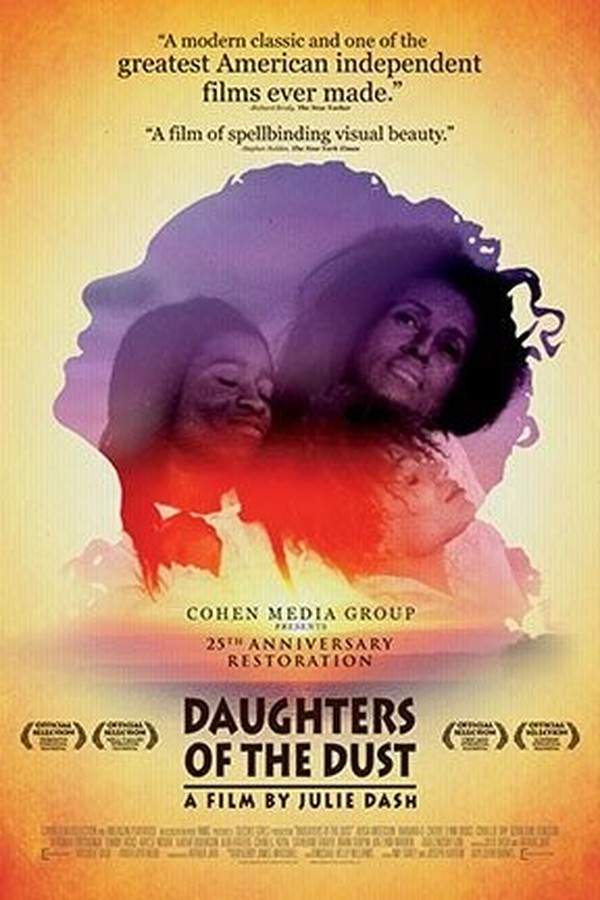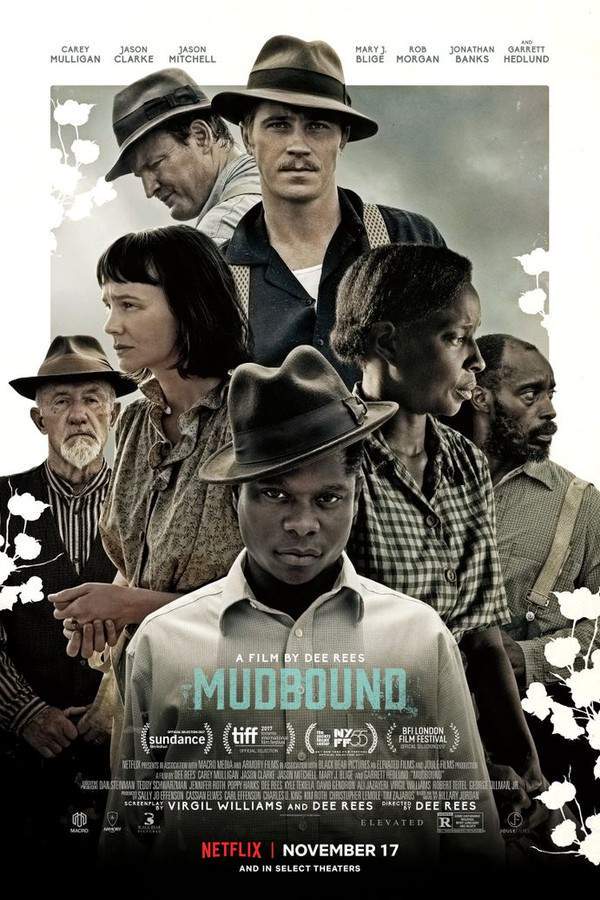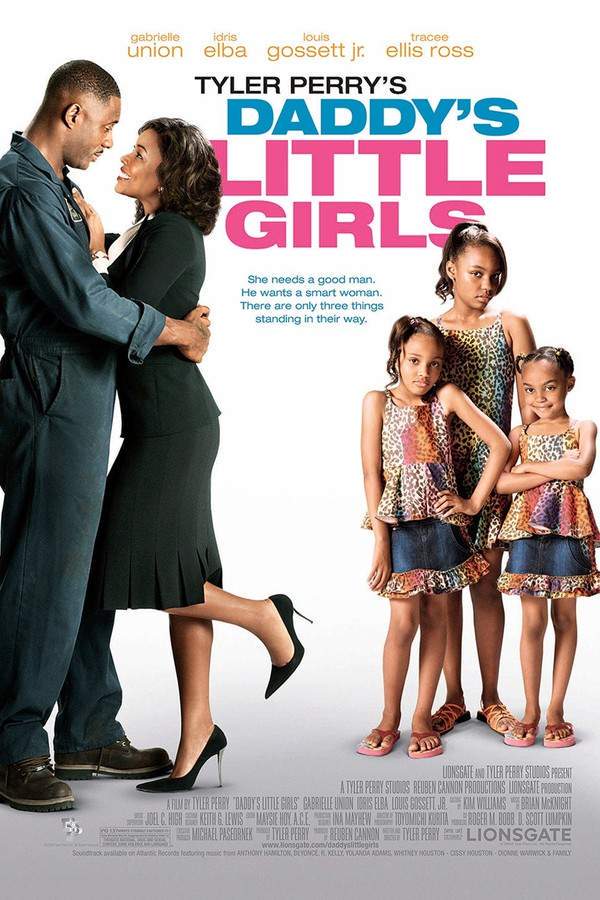
Daughters of the Dust 1991
Directed by

Julie Dash
Made by

Cohen Media Group
Test your knowledge of Daughters of the Dust with our quiz!
Daughters of the Dust Plot Summary
Read the complete plot summary and ending explained for Daughters of the Dust (1991). From turning points to emotional moments, uncover what really happened and why it matters.
Daughters of the Dust takes us back to 1902, exploring the lives of the Peazant family, a community of Gullah islanders residing at Ibo Landing on Dataw Island, just off the Georgia coast. The rich cultural tapestry of the islanders, stemming from their ancestors who arrived as enslaved individuals centuries earlier, is highlighted through their unique Gullah language—a vibrant creole enriched by influences from West Africa, the British Isles, and local traditions. This isolation on large plantations has allowed their language and cultural practices to flourish, surviving through generations.
The narrative unfolds through the voice of the Unborn Child, the future daughter of Eli and Eula, drawing from the stories of their ancestors. This poetic film employs striking visual imagery and a circular storytelling style to connect the past, present, and future of the Gullah people, who stand at the brink of a momentous journey to the mainland and an embrace of a more “civilized” lifestyle. As Nana Peazant, the family’s matriarch, performs her ancestral spiritual rituals, she poignantly reminds her family, “We are two people in one body. The last of the old and the first of the new.”
Amidst this rich tapestry, contrasting characters emerge: Viola, a devout Christian, and Yellow Mary, a free-spirited woman who arrives accompanied by her lover Trula from the city. Their visit is bittersweet, as Yellow Mary is set to leave for Nova Scotia shortly thereafter. Accompanying them is Mr. Snead, a photographer from the mainland, who captures the essence of the islanders as they prepare to leave their heritage behind. Tensions within the family rise as Eli grapples with the upcoming birth of Eula’s child, a consequence of her assault on the mainland—can he accept a child that may not be his?
The film weaves through various family narratives, including that of Haagar, who finds the island’s spiritual practices outdated and yearns for the modern opportunities beyond its shores. Her daughter, Iona, is caught between worlds, yearning for her secret lover, St. Julien Lastchild, a Cherokee resident of the island. The emotional tension peaks when St. Julien confesses his love in a letter, just as Iona is about to depart.
As the women prepare a traditional meal featuring okra, yams, and shellfish on the beach, the men indulge in games and banter nearby. Children engage in playful activities and religious practices, while Viola leads a Bible study session. The bonds between women strengthen, particularly as Yellow Mary and Eula reflect on their survival and resilience in the face of trauma. Bilal Muhammad, a cousin with ties to the Ibo culture, leads a heartfelt Muslim prayer, as Nana conjures the spirits of their ancestors. This blend of ritual and modernity—Nana’s ancestral invocations alongside Viola’s Bible—highlights the complexities of their histories.
As the Peazant family confronts the pivotal decisions of leaving their beloved island or staying true to their roots, emotions run high. Yellow Mary ultimately decides to remain with Eli and Eula. In a poignant moment, Iona leaps from the departing boat to join Lastchild, who arrives gallantly on horseback. Haagar struggles to hold onto her daughter while others in the family watch the bittersweet departure of most of the Peazants, marking the end of an era and the dawn of new beginnings.
Daughters of the Dust Timeline
Follow the complete movie timeline of Daughters of the Dust (1991) with every major event in chronological order. Great for understanding complex plots and story progression.
Arrival at Ibo Landing
In 1902, the Peazant family resides at Ibo Landing on Dataw Island, Georgia. This community of Gullah islanders cherishes their cultural heritage, stemming from their enslaved ancestors who brought unique traditions and language to this isolated area.
The Voice of the Unborn Child
The narrative unfolds through the perspective of the Unborn Child, representing the future baby of Eli and Eula. This storytelling technique symbolizes the continuity and connection between generations of the Gullah people.
Nana Peazant's Rituals
Nana Peazant, the family matriarch, engages in ancestral spiritual rituals. Her poignant reminder to the family highlights the juxtaposition of old and new generations, reminding them of their rich heritage.
Arrival of Yellow Mary and Trula
Yellow Mary arrives with her lover Trula, introducing contrasting perspectives within the Peazant family. Their bittersweet visit becomes a catalyst for discussion about choices between staying on the island or seeking a new life.
Eli's Conflict
Eli, the father, faces emotional turmoil regarding the impending birth of Eula's child, which is complicated by her past assault on the mainland. This internal struggle questions his ability to accept a child that may not be his own.
Haagar's Dilemma
Haagar, another family member, contemplates the spiritual practices of the island, viewing them as outdated. She yearns for modern opportunities beyond the shores, representing the pull of the outside world.
Iona's Secret Love
Iona finds herself torn between her traditional upbringing and her love for St. Julien Lastchild, a Cherokee resident. The letter from St. Julien expressing his love intensifies Iona's emotional conflict as she prepares to leave.
Traditional Meal Preparation
The women of the family come together to prepare a traditional meal on the beach, featuring okra, yams, and shellfish. This gathering underscores the strength of women in their shared experiences and cultural practices.
Religious Practices
As Viola leads a Bible study session nearby, Bilal Muhammad offers a heartfelt Muslim prayer. This melding of different spiritual traditions showcases the complex identity of the Peazant family.
Emotional Departure
As tensions rise, the family grapples with the decision to leave their beloved island. Yellow Mary ultimately chooses to stay with Eli and Eula, while Iona dramatically leaps from a departing boat to join St. Julien.
Haagar's Loss
Haagar watches helplessly as her daughter, Iona, leaves with St. Julien. The moment encapsulates the struggle of holding onto the past while the family faces impending changes.
End of an Era
The bittersweet departure of most of the Peazant family marks a poignant moment in their history. It signifies the transition from their traditional life on the island to an uncertain future, highlighting the pressures of modernity.
A New Beginning
With the departure of the family members, the remaining Peazants face a new reality. Nana's words resonate as they prepare for a future that may challenge their cultural identity and values.
Daughters of the Dust Characters
Explore all characters from Daughters of the Dust (1991). Get detailed profiles with their roles, arcs, and key relationships explained.
Nana Peazant
Nana is the matriarch of the Peazant family, embodying the wisdom and traditions of her ancestors. She is deeply spiritual, performing rituals that connect her family to their past and guiding them through the transitions they face. Her character serves as a bridge between the old and the new, emphasizing the importance of honoring one’s heritage.
Eli
Eli is a complex character filled with uncertainty and emotional turmoil regarding Eula’s pregnancy. As he grapples with the possibility of being a father to a child that may not be his, he represents the struggle of identity amidst change. His internal conflict reflects the larger tensions faced by the Gullah community.
Eula
Eula is a resilient character who faces trauma both from her past and her current situation. With her pregnancy and its uncertain circumstances, she embodies the struggles of many women in her community. Her connection to the land and tradition is challenged as she navigates personal and familial expectations.
Yellow Mary
Yellow Mary is depicted as a spirited woman who challenges traditional expectations. Her arrival from the mainland with her lover sparks complex dynamics within the family. Through her character, the film examines the contrasts between modernity and tradition, and the sacrifices made in the name of love.
Haagar
Haagar is a character who feels trapped by the island’s traditions and yearns for broader opportunities. Her desire for change represents the tension between historical legacies and the aspirations for a modern life. This internal struggle resonates deeply with the overall narrative of the Gullah people's choices.
Iona
Iona is caught between her love for St. Julien and her family's expectations. Her emotional journey highlights the themes of love and belonging, illustrating the challenges of forging one's path while being tied to family traditions. Her actions encapsulate the struggle many face in balancing desire with duty.
Daughters of the Dust Settings
Learn where and when Daughters of the Dust (1991) takes place. Explore the film’s settings, era, and how they shape the narrative.
Time period
1902
The year 1902 is marked by transitions and the impending changes faced by Gullah communities. This period saw the effects of previous generations' struggles and resilience as families grappled with the modern influences encroaching upon their traditional lifestyle. It serves as a poignant backdrop for the narrative of cultural preservation amidst change.
Location
Ibo Landing, Dataw Island, Georgia
Ibo Landing, located on Dataw Island off the Georgia coast, is a significant site for the Gullah culture. This picturesque island is known for its rich history and strong community ties among the Gullah islanders. The isolation from the mainland has allowed unique traditions and languages to flourish among its inhabitants.
Daughters of the Dust Themes
Discover the main themes in Daughters of the Dust (1991). Analyze the deeper meanings, emotional layers, and social commentary behind the film.
🌊
Cultural Identity
The film deeply explores the theme of cultural identity, particularly how it is shaped by history and environment. The Gullah people’s rich traditions and unique creole language reflect their African ancestry while navigating the complexities of a modernizing world. The tension between maintaining cultural heritage and adapting to new ways of life is a central conflict.
💔
Loss and Resilience
Loss and resilience permeate the narratives of the Peazant family as they confront the potential displacement from their ancestral home. The characters grapple with personal and collective trauma while showing remarkable strength in their bid to honor their heritage. Their stories are woven together, highlighting the emotional weight of their cultural connections.
🤝
Connection and Community
The theme of connection is prevalent as the Peazant family engages in communal rituals and shared meals. This bond reinforces their identity and serves as a reminder of their shared history. The film emphasizes the importance of family ties and community support in navigating challenges, embodying a collective resilience against change.

Coming soon on iOS and Android
The Plot Explained Mobile App
From blockbusters to hidden gems — dive into movie stories anytime, anywhere. Save your favorites, discover plots faster, and never miss a twist again.
Sign up to be the first to know when we launch. Your email stays private — always.
Daughters of the Dust Spoiler-Free Summary
Discover the spoiler-free summary of Daughters of the Dust (1991). Get a concise overview without any spoilers.
At the cusp of the 1902 era, a tight‑knit Gullah family inhabits the windswept Sea Islands off the Georgia coast, a place where the Atlantic’s rhythm shapes daily life and ancient traditions thrive in isolation. Their world is a living museum of language, song, and ritual, preserved through generations that have never known the mainland’s bustle. The community stands at a crossroads, wrestling with a fundamental choice: remain rooted in the ancestral soil that nurtured their heritage, or venture toward a uncertain future on the mainland. The film’s tone is lyrical and visual, letting the tide and the rustle of palm fronds speak as much as any dialogue.
The family’s matriarch, Nana Peazant, embodies the bridge between eras, guiding her descendants with whispered prayers and ancestral invocations that echo the island’s deep spiritual pulse. Eli returns home carrying the weight of a new, unborn child with Eula, a partnership already layered with the complexities of love, loss, and expectation. Around them, Viola offers steadfast Christian devotion, while Yellow Mary arrives from the city, her free‑spirited presence hinting at worlds beyond the shoreline. Haagar eyes the promise of modern opportunity, and her daughter Iona is caught between a budding love for St. Julien and the pull of tradition. Each character reflects a facet of the community’s collective identity, from reverence to restless curiosity.
Every sunrise finds the island alive with communal rituals: the scent of okra, yams, and shellfish cooking over fire, the cadence of children’s games, and the harmonious blend of gospel hymns with ancestral chants. A mainland photographer, Mr. Snead, wanders among them, his camera capturing fleeting moments that feel both intimate and historic. The visual tapestry is woven with warm earth tones, dappled sunlight, and the ever‑present murmur of the sea, underscoring a mood that is both celebratory and wistful.
As the families gather, the air hums with quiet anticipation. The weight of heritage presses against the allure of change, and the bonds between women, men, and children shimmer with unspoken hopes. In this richly textured portrait, the island itself becomes a character—its tides, its stories, its stubborn beauty—inviting the viewer to linger on the precipice of an era about to transform, without ever revealing which direction the wind will finally blow.
Can’t find your movie? Request a summary here.
Movies with Similar Twists and Themes
Uncover films that echo the narrative beats, emotional arcs, or dramatic twists of the one you're exploring. These recommendations are handpicked based on story depth, thematic resonance, and spoiler-worthy moments — perfect for fans who crave more of the same intrigue.
Featured on this page

What's After the Movie?
Not sure whether to stay after the credits? Find out!
Explore Our Movie Platform
New Movie Releases (2025)
Famous Movie Actors
Top Film Production Studios
Movie Plot Summaries & Endings
Major Movie Awards & Winners
Best Concert Films & Music Documentaries
Movie Collections and Curated Lists
© 2025 What's After the Movie. All rights reserved.









